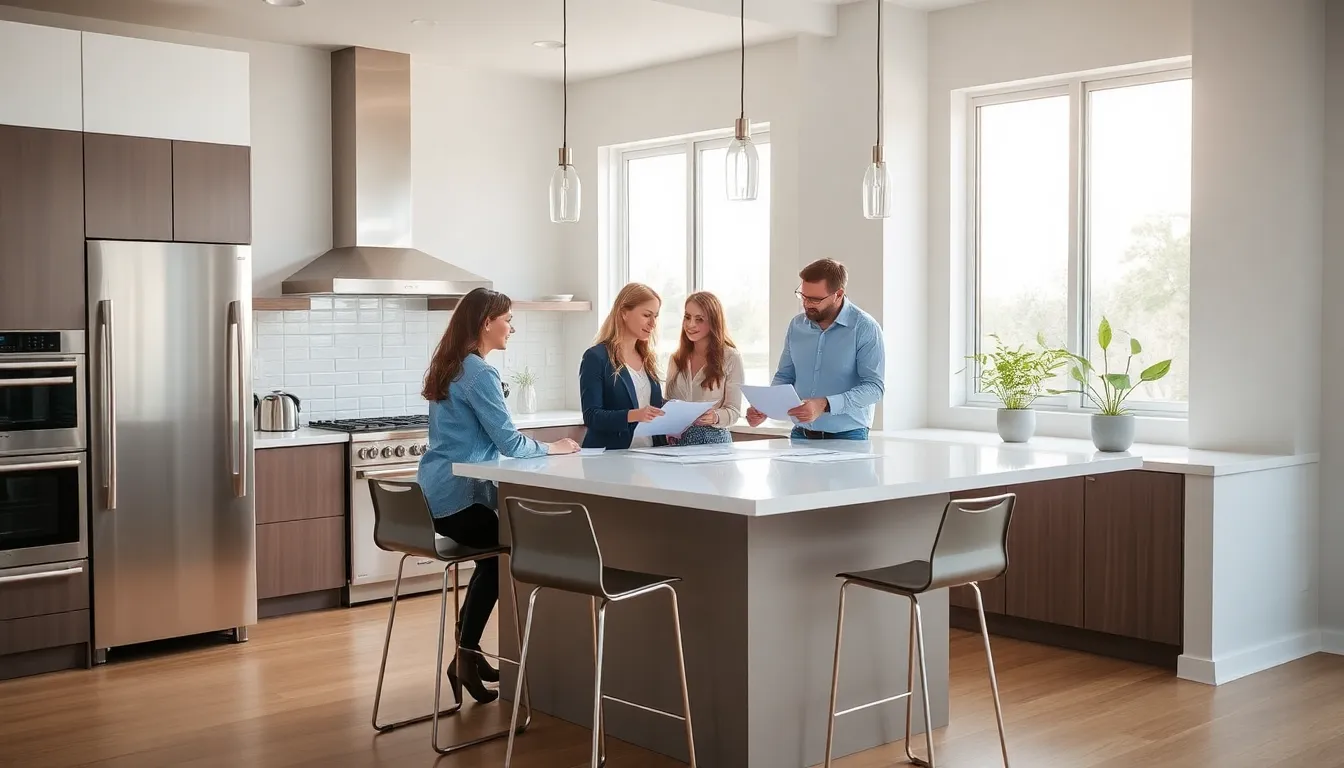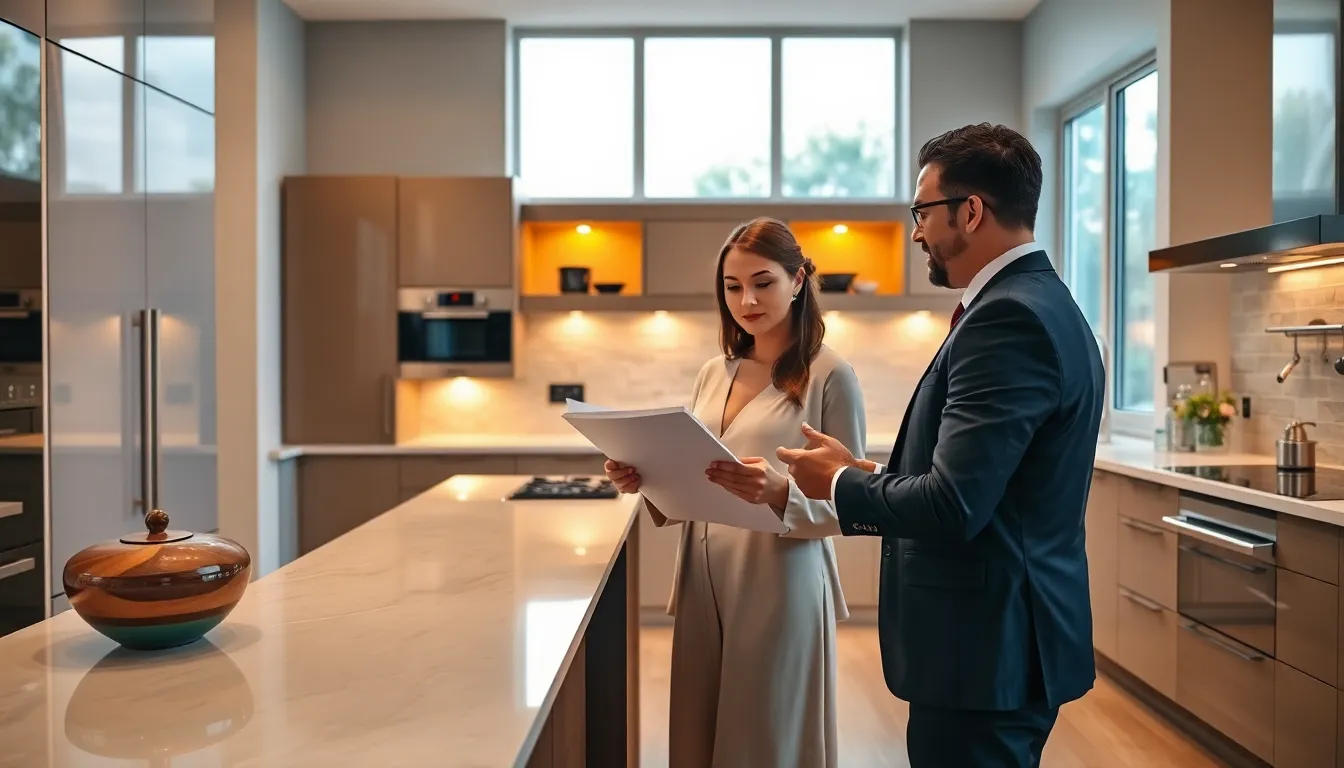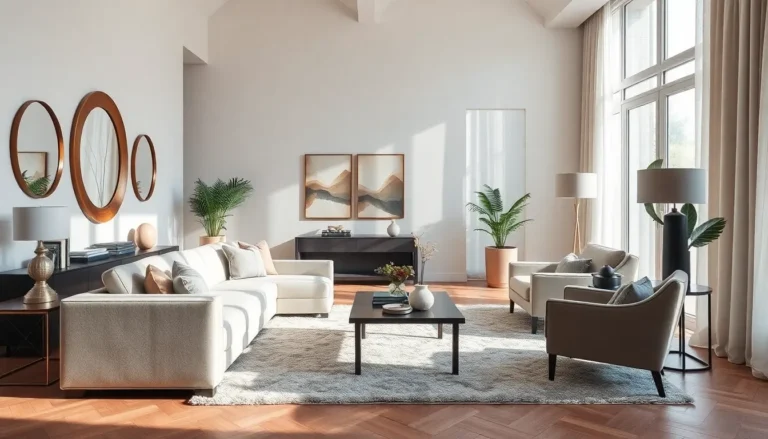Are you tired of cooking in a kitchen that lacks character and functionality? Well, you’re not alone. Countless homeowners find themselves in the same situation, stuck with an uninspired space that makes whipping up dinner feel more like a chore than a delight. But fear not. Understanding kitchen design concepts can turn that dull space into your culinary sanctuary. It’s not just about aesthetics: it’s about creating a space that marries style with practicality and reflects your unique personality. So buckle up as we jump into the exciting world of kitchen design.
Table of Contents
ToggleUnderstanding Kitchen Design

Kitchen design encompasses the art of creating functional, aesthetically pleasing spaces tailored to culinary activities. It’s about aligning the layout with the needs of the user while considering flow and accessibility. From classic layouts to modern innovations, understanding kitchen design serves as the foundation for any successful project. The kitchen is often considered the heart of the home, a central hub where meals are crafted, memories are made, and gatherings occur. When one appreciates the principles behind kitchen design, it becomes easier to visualize how these elements can transform their space.
To begin, it’s essential to grasp the significance of various layouts. Galley kitchens are efficient for smaller homes, while L-shaped layouts maximize space and flow. This understanding allows designers to select a layout that best suits the user’s lifestyle, ensuring that the kitchen feels less cramped and more open. What’s vital is to consider how the kitchen will be used, not just today but for years to come.
Eventually, embracing the principles of aesthetic and functional design provides a roadmap for innovation and creativity in the culinary workspace.
Key Elements of Kitchen Design
In any kitchen, certain key elements contribute to overall success and user satisfaction. First and foremost is the kitchen layout, which dictates movement and workflow. Also, storage solutions, lighting, appliances, and finishes play pivotal roles in creating a harmonious cooking environment.
1. Layout: The configuration of the kitchen sets the stage for everything else. The most common layouts include L-shape, U-shape, and galley. Each has advantages based on space and function.
2. Storage Solutions: A well-designed kitchen has adequate storage to keep clutter at bay. This includes cabinets, drawers, pantry spaces, and innovative solutions like pull-out shelves or lazy Susans to maximize usability.
3. Lighting: Lighting is often an underrated aspect of kitchen design. It’s about layering light sources to enhance functionality while creating a welcoming atmosphere. Task lighting, ambient lighting, and accent lighting all work together to brighten the space efficiently.
4. Appliances: Choosing the right appliances can significantly impact the look and feel of a kitchen. Selecting energy-efficient models may save money long-term while ensuring that the kitchen is equipped with the tools necessary for any culinary try.
5. Finishes: Finally, finishes encompass everything from countertops and backsplashes to flooring and cabinetry. Selecting materials that balance durability and style can create a timeless appeal.
Popular Kitchen Design Styles
Diverse kitchen design styles continue to emerge, and understanding these can help individuals decide on their ideal aesthetic. Here’s a breakdown of some enduring favorites:
1. Modern: Characterized by sleek lines, minimalistic features, and open spaces. Modern kitchens often use stainless steel appliances and engineered materials for a clean appearance.
2. Farmhouse: Warmth and nostalgia define the farmhouse style. With rustic finishes and vintage appliances, this aesthetic feels inviting and homely. Think shiplap walls, large sinks, and open shelving.
3. Industrial: This style embraces raw materials and urban charm, often featuring exposed brick, metal accents, and minimalistic decor. It’s perfect for those looking for a more rugged vibe.
4. Traditional: Classic yet elegant, traditional kitchens often highlight intricate cabinetry, warm woods, and timeless color palettes. They evoke a feeling of comfort and familiarity.
5. Contemporary: Change is constant in contemporary design. This style integrates the latest trends and technology, focusing on sustainability and smart appliances. Think eco-friendly materials alongside cutting-edge designs.
Maximizing Functionality in Kitchen Design
It’s crucial to prioritize functionality in kitchen design to ensure efficiency and ease of use. The placement of appliances, the workflow between different stations, and even the height of countertops all contribute to a well-functioning kitchen.
One concept often referenced is the work triangle, which interlinks the three main workstations: the sink, stove, and refrigerator. The distances between these elements should not be too far apart: otherwise, the kitchen can feel disjointed.
Storage customizations also play a vital role in maximizing functionality. Implementing intelligent designs can turn awkward spaces into useful storage and use cabinets that extend up to the ceiling to maximize vertical space. Drawers equipped with dividers can keep cooking utensils organized, reducing time spent searching for essential items.
Also, ensuring proper lighting enhances functionality. Under-cabinet lighting aids in food preparation, while pendant lights above islands can create useful focal points.
Trends in Kitchen Design
In the evolving world of kitchen design, several trends are making waves. Embracing these can not only modernize a kitchen but also enhance its functionality.
1. Smart Technology: Integrating smart appliances and gadgets has surged in popularity, improving efficiency and connectivity for the modern cook. From refrigerators that can create grocery lists to ovens that can be controlled remotely, technology is transforming how kitchens operate.
2. Sustainable Materials: Many homeowners now prioritize eco-friendly materials and sustainable practices. From bamboo cabinetry to recycled countertops, opting for green solutions can make a significant impact.
3. Open Concept Layouts: The trend of open living continues to thrive. Kitchens that flow into dining or living areas create inviting spaces for socializing and cooking simultaneously.
4. Bold Colors: Gone are the days of all-white kitchens: bold colors are in. From dark cabinetry to vibrant backsplashes, daring hues can create unique statements that reflect the homeowner’s personality.
5. Multifunctional Spaces: The role of kitchens is expanding. Many modern designs now include spaces for working or entertaining, making the kitchen a multifunctional area rather than a dedicated cooking zone.
Tips for a Successful Kitchen Design Project
When embarking on a kitchen design project, a few strategies can ensure success:
1. Plan Ahead: Before diving in, take the time to assess your needs and envision how the new kitchen will function. Make notes about pain points in your current space to guide design choices.
2. Set a Budget: Establishing a budget early can help streamline decisions and prevent overspending. Allocate funds appropriately for different elements such as cabinets, appliances, and finishes.
3. Hire Professionals: Unless one has extensive experience, considering professional help can be a wise investment. Designers can provide invaluable insights and access to quality materials.
4. Don’t Rush the Process: Kitchen design takes time. Rushing can lead to mistakes and subpar decisions. Take the time to think through each element carefully.
5. Stay Flexible: Flexibility during the design process can help accommodate changes or unexpected issues. Being open to adjustments can lead to better outcomes.








